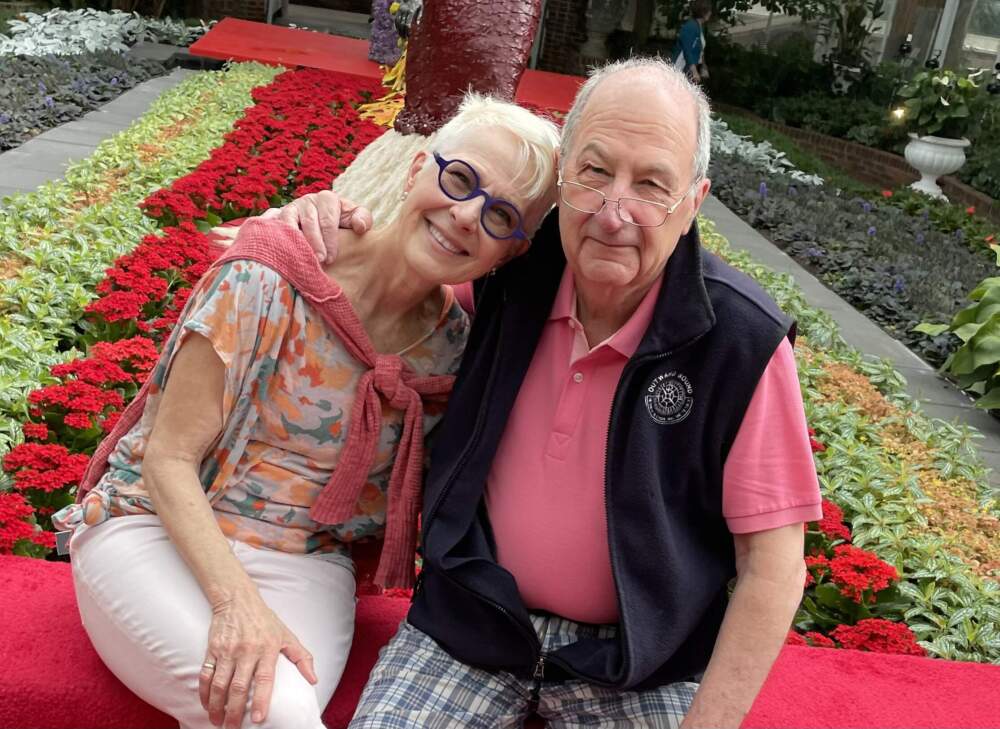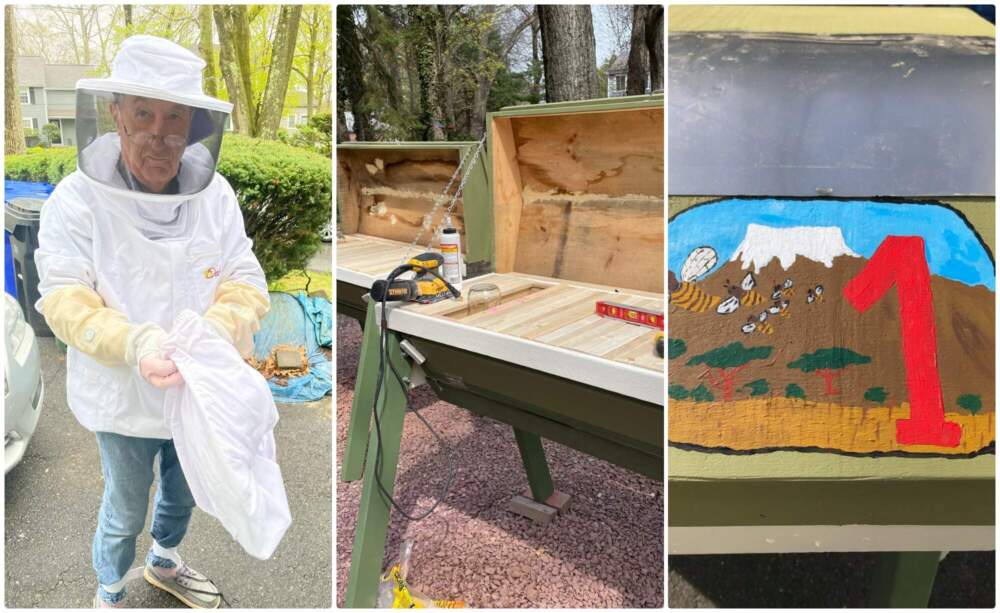Advertisement
Essay
Bees, like people, need each other

“The bees were delivered to the wrong post office!” My other half, Peter, had called me from the car and I could hear an edge of panic in his voice. If he didn’t make it to the right post office before they closed, the bees would be trapped for the weekend at the Newton Highlands location, after having traveled for a week from North Carolina. Although I’m no apiarist, I understood the stakes. The bees could die.
Bees everywhere are at risk. According to Mass Audubon, three bumblebee species in the Eastern U.S. have declined 90% in the past 30 years. Maybe, in a small way, our two hives could help. Our neighbors thought so. They were thrilled when we told them our plans.
Since I first met Peter, he had talked of keeping bees like his father did. Now, as he settled into retirement, he had time. He attended a 10-week beekeeping class offered at the agricultural school in Walpole. We drove to Connecticut to pick up two special hives called top bar hives, a frameless beehive in which the comb hangs from removable bars. Top bar hives are commonly used in parts of South Africa and Zimbabwe, where Peter had grown up. He painted the hives, numbers one and two, with pictures of Mount Kilimanjaro to declare his heritage. And then he transformed our backyard — clearing a space for the hives, lining it with rocks and building trellises with flowering vines to guide the bees away from the kids next door.
This is who Peter is, a nurturer. It’s what drew me to him. When we met, I had just emerged from a marriage that had capsized into imbalance. Being a single mom had taught me to fill every role: I was used to being the cook, the cleaner, the organizer. The one who cracked the paint when hanging pictures.

On Match.com, Peter had chosen a photo of himself with all five of his kids. Here was a man full of caring love, I thought. Turns out, my instincts were right. Even now, 12 years later, Peter drives me to work every day. He scans recipes to make Shrimp Mozambique or Gochung Burgers. He coaxes peonies, lilies and clematis to blossom in our front yard. He loves to take care of living things. Of me.
Bees are like that, too. Social creatures, they spend their lives caring for each other.
Peter arrived just as the post office was closing. But he convinced them to re-open and let him retrieve the package. He brought the two conjoined white boxes, which looked like milk crates, into our basement. They rattled with angry buzzing, the bees clearly ticked off from their odyssey. Peter had been assigned a mentor from the beekeeping school, but his mentor wasn’t available. He needed my help. What I know of apiculture could fit on a bee’s stinger. We suited up with our white suits and netted head coverings.
Advertisement
We tried to pry apart the plastic boxes with a screwdriver and poked a hole in one. Bees started leaking into our basement. “Did you even read the instructions?” I yelled. This was, I realize now, not helpful. We banged open the door into the backyard and huddled under the deck to open the crate. Rain was coming down in numbing sheets. Bees hate the cold and wet.
Peter finally released the lid of the first crate and turned it over to dump the bees into the hive, but they weren’t having any of it. They carpeted the inside of the white plastic box, massing over the small capsule where the queen was sequestered. I grabbed barbecue tongs to dislodge the capsule and dropped it onto the wet ground. Peter may have yelled at me. I may have screamed back.
The queen’s container, plugged with a sugar cube, which the colony feeds on while acclimating to her, was designed to insert into a vertical hive, not the top bar Peter had purchased. But as the rain soaked through our suits, Peter managed to tie her capsule inside the beehive. He placed the open white box, still writhing with bees, under the hive so they could find their way in. It had taken us over an hour to get this far with one hive and we were both exhausted.

“I’m going to wait for my mentor to install the other hive,” he said.
My stress evaporated. “Thank God.”
The next day Peter's mentor arrived and helped install the second hive in less than 10 minutes.
I knew that bees were born as either male drones, female workers or the queen. I didn’t know that a worker bee’s role changes over the course of her short life. At first she acts as custodian, cleaning out debris. Then she cares for the young larvae. Next, she may feed the queen or provide defense as a soldier for the hive. Finally, at the advanced age of two or three weeks, she explores the world, foraging first for pollen, then nectar.
In my relationship with Peter, I have found my role recast as sous chef, consultant on yard layout and décor, and the one who marks the spot where the pictures go, but doesn’t wield the hammer. I will help with hoisting plants or finding misplaced rakes. If pressed, I will assist with the bees even though, in the end, that first hive met calamity. The queen died. A few days later the colony, lost without her, swarmed our back deck and then took off, en masse, to their deaths. A hive cannot survive without a queen. They depend on every role.
“It’s OK,” Peter hugged me when he discovered the dead queen. “I’m learning too.”
We’re all learning. Bees, like people, need each other. Bees, like all of us, do best when they lean on each other’s strengths.
A few weeks later, a new box of bees arrived. Peter installed them without a hitch. Both hives are thriving.
Follow Cog on Facebook and Instagram. And sign up for our newsletter, sent on Sundays. We share stories that remind you we're all part of something bigger.
